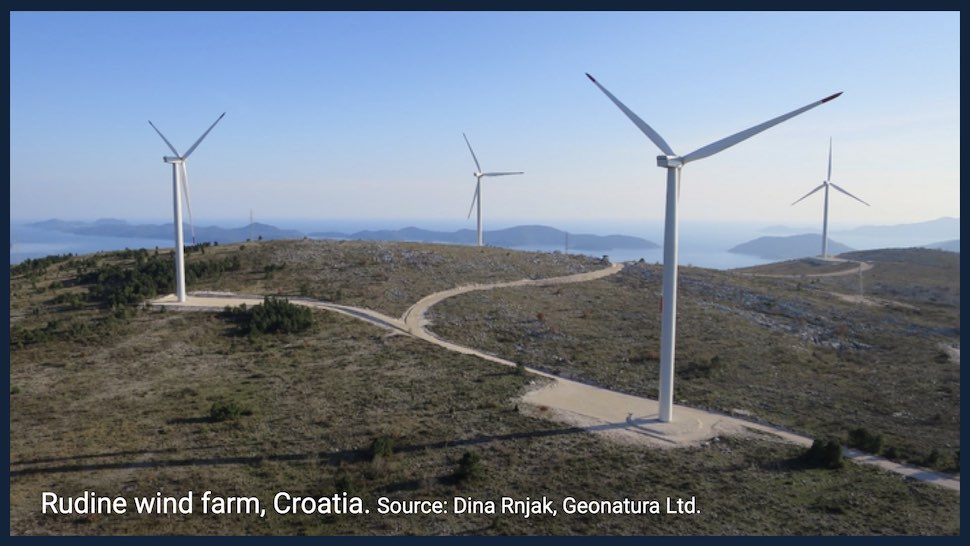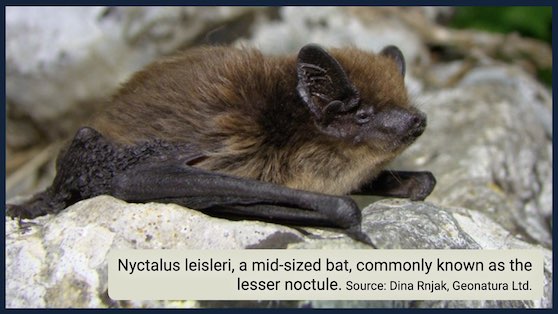
Cleantech
Features
News
News
Cleantech
Energy & Power
Generation
News
Renewables
Wind turbines and bat fatalities? Try site-specific mitigation schemes
February 21, 2023 | By Anthony Capkun

February 21, 2023 – Bat fatalities caused by wind turbines could be significantly reduced—by as much as 86%—thanks to a new site-specific mitigation scheme described by Dina Rnjak of Geonatura Ltd. (and colleagues Magdalena Janeš, Josip Križan and Oleg Antonić) in a study in the journal Mammalia.
While several mitigation systems have been tried over recent years, their efficiency in protecting bats has not been fully investigated. One method, called blanket curtailment, slows blade rotation to less than one revolution per minute at the low wind speeds that have been found to cause the highest number of bat fatalities.
This is still a relatively unsophisticated procedure since it usually involves applying a general wind speed threshold for all wind turbines for a longer period, and can cause considerable loss of energy generation.
To find a way to significantly reduce bat fatalities along with minimizing the reduction in electricity production, Rnjak and colleagues carried out a four-year monitoring programme at Rudine wind farm in Croatia.
During the first two years, the high number of bat carcasses found from mid-July to the end of October indicated a need for some kind of mitigation strategy at that time of year. In addition to the known importance of wind speed, the study also confirmed the significant role of temperature and rainfall on bat activity, which was reduced during periods of rain and at temperatures below 11 C.
The direct monitoring of bat activity, fatalities and the effect of weather led to a site-specific wind turbine curtailment strategy dependent on the specific wind-speed range most dangerous for the bats, adapted to the most critical time periods and most significantly located wind turbines.

In addition, the strategy included a process called blade feathering, which adjusts the angle of the turbine blade to prevent undesirable freewheeling. The overall effectiveness of this approach was confirmed in trials conducted over two years.
Using the same method at another wind farm in Croatia showed that different critical wind-speed thresholds needed to be applied at that site to achieve a significant reduction in fatalities.
“This indicates the importance of using site-specific data to determine the best mitigation scheme for each location,” said Rnjak. “Our work shows that electricity production losses can be significantly reduced by replacing blanket curtailment with more adaptable and site-specific approaches.”
The researchers now plan to further refine these methods and engage in publicity to encourage them to be more widely applied.
Print this page